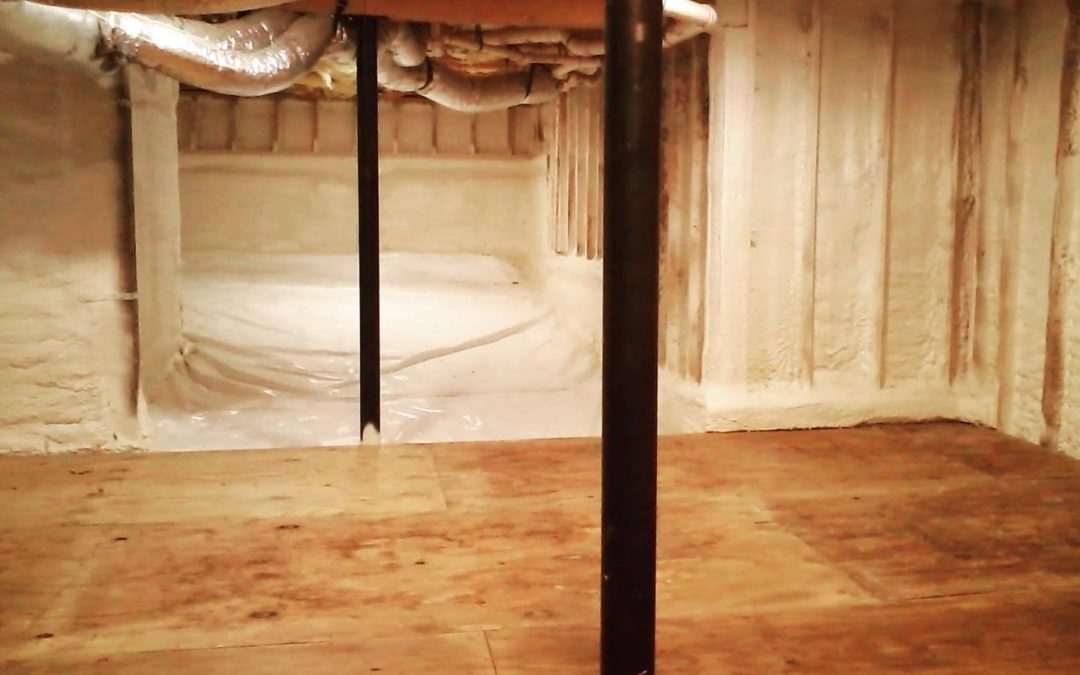When owning a home in Middle Tennessee, most of us learn quickly that good insulation is critical in keeping our homes warm in the winter and cool in the summer.
Many houses, especially older homes, tend to have traditional fiberglass insulation. While the fluffy, pink stuff was once top of the line, innovations and improvements in science and technology have produced a superior home protection product – spray foam insulation.
When working to protect crawl spaces of homes in our area, the professionals at Columbia CrawlSpace have found that this type of insulation and sealing product far outperforms fiberglass.
Here we discuss some of the pros and cons of spray foam insulation.
Pros:
The first and most important positive aspect of spray foam is that it is an excellent thermal barrier. Studies have shown that homes with fiberglass insulation lose up to 40% of their heating/cooling through air leaks. That’s the equivalent of leaving a window wide open year round. Spray foam has a high R value (a rating of how well insulation resists conduction of heat) and expands to fill all the little nooks and crevices, so it prevents air flow and loss of warm or cool air. With the application of spray foam in your crawl space, you should see immediate and long-term savings on energy bills.
Spray foam insulation does not retain water. There are two types of spray foam insulation: open-cell or closed-cell. Open-cell spray foam is not a complete moisture barrier; therefore, some moisture may seep into the insulation, but the composition of open-cell insulation allows for rapid drying. Closed-cell insulation is a rigid, waterproof barrier that will repel moisture. Whether you choose open-cell or closed-cell, the risk of mold and mildew developing under your home is reduced or eliminated.
Spray foam insulation in the crawl space does not attract termites and other pests. Termites enjoy snacking on other insects, preferably the ones that get caught in traditional fiberglass insulation or the wood supports of your home. Because it is an air-tight barrier that does not stay damp, the bugs don’t get in, so termites have nothing to attract them, which can save you thousands in termite eradication and major repairs.
A major reason for the increased popularity of spray foam insulation is that it is eco-friendly. The air-tight seal prevents air flow, which decreases energy use. This decreased energy use means a reduction in ozone-depleting greenhouse gas emissions. This is a true win-win – good for the homeowner and good for Mother Nature.
Cons:
Some homeowners consider one negative of spray foam insulation is that it is NOT a DIY project. Due to the nature of the chemicals used to create the spray foam and the need for precise measurements in mixing, professional installation is required. The project often involves removal of old fiberglass insulation in an existing home, as well. This is a task that is better performed by experts with appropriate protection from the tiny glass particles that shed from fiberglass, causing skin and lung irritation.
If immediate cost is a major issue for the homeowner, the higher up-front expense of spray foam may be problematic. However, if installation can be financed over two to four years, the energy savings will make up for that expense, especially in a home that is currently poorly insulated. The good news is that spray foam insulation lasts for approximately 80 years, so it is a one time expense that will pay for itself in a few short years.
Some homeowners may also be concerned about the odor during installation and possibility for off gassing afterward. A knowledgeable, experienced installer, like our experts at Columbia CrawlSpace, will ensure low odor during installation by using proper ventilation. In addition, there are low-VOC spray foam brands available that greatly reduce or eliminate the chance of off gassing.
If you’re interested in protecting your home and saving on energy bills, give Columbia CrawlSpace a call today. We will provide a free inspection, recommendations, and an estimate so you can keep your home cozy this winter.

Recent Comments